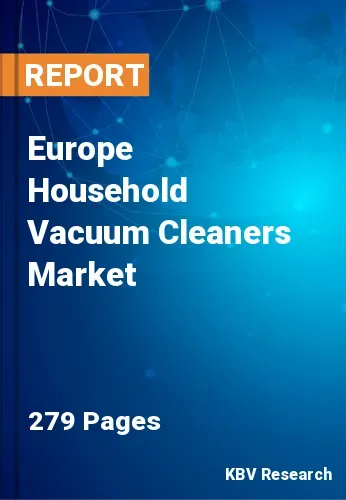The Europe Household Vacuum Cleaners Market would witness market growth of 5.9% CAGR during the forecast period (2024-2031). In the year 2021, the Europe market's volume surged to 23,060.04 thousand Units, showcasing a growth of 13.6% (2020-2023).
Cordless vacuum cleaners have gained popularity for their convenience and versatility. They operate on rechargeable batteries, offering freedom from cords and easy maneuverability around furniture and tight spaces. The advantages include portability, lightweight design, and the ability to quickly clean small areas without plugging and unplugging. Market trends show increasing demand driven by urban living, where compact, efficient cleaning solutions are preferred. Advances in battery technology have extended runtime and improved suction power, enhancing their appeal. Thus, the Germany market consumed 1,993.48 thousand Units in 2023.

The Germany market dominated the Europe Household Vacuum Cleaners Market by Country in 2023, and would continue to be a dominant market till 2031; thereby, achieving a market value of $1,606.5 million by 2031. The UK market is exhibiting a CAGR of 5.1% during (2024 - 2031). Additionally, The France market would experience a CAGR of 6.8% during (2024 - 2031).
With the increasing number of households having pets, vacuum cleaners have specialized attachments and filters designed to remove pet hair and dander efficiently. This has become crucial for pet owners seeking to maintain a clean, allergen-free living space. High-efficiency particulate air (HEPA) filters and advanced suction technologies in modern vacuum cleaners make them effective tools for allergy management. These appliances can capture and contain microscopic particles, relieving individuals with allergies or respiratory conditions.
Pets can make messes in various home areas, from shedding on carpets to tracking dirt on hard floors. Versatile vacuum cleaners that can adapt to different surfaces and feature various attachments cater to the diverse cleaning needs associated with pet ownership. Some vacuum cleaners have features designed to neutralize or eliminate pet odors, creating a fresher and more pleasant home environment. Pet owners, especially those with busy lifestyles, value convenience in cleaning. Vacuum cleaners that offer efficient and time-saving solutions to manage pet-related messes appeal to pet owners looking for practical and effective cleaning tools.
The broader European market also features a high level of technological innovation. New technologies and features are constantly being developed by manufacturers to accommodate the changing requirements of consumers. For example, the integration of smart technology into vacuum cleaners enables users to remotely manage their devices through smartphone applications, thereby improving convenience and efficiency. These innovations cater to the tech-savvy European consumer base, which values performance and ease of use. Thus, the regional market will grow rapidly in the coming years.
Free Valuable Insights: The Global Household Vacuum Cleaners Market will Hit USD 28 Billion by 2031, at a CAGR of 6.4%
Based on Type, the market is segmented into Corded and Cordless. Based on Mode of Sales, the market is segmented into Offline and Online. Based on Product, the market is segmented into Cylinder Vacuum Cleaners (Corded and Cordless), Upright Vacuum Cleaners (Corded and Cordless), Handheld Vacuum Cleaners (Corded and Cordless), Stick Vacuum Cleaners (Corded and Cordless), Steam Vacuum Cleaners (Corded and Cordless), Robotic Vacuum Cleaners (Cordless), and Others (Corded and Cordless). Based on countries, the market is segmented into Germany, UK, France, Russia, Spain, Italy, and Rest of Europe.

By Type (Volume, Thousand Units, USD Billion, 2020-2031)
By Mode of Sales (Volume, Thousand Units, USD Billion, 2020-2031)
By Product (Volume, Thousand Units, USD Billion, 2020-2031)
By Country (Volume, Thousand Units, USD Billion, 2020-2031)
Our team of dedicated experts can provide you with attractive expansion opportunities for your business.

